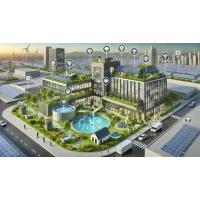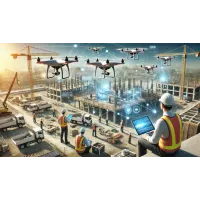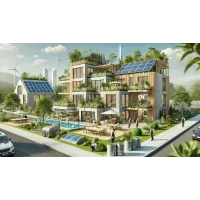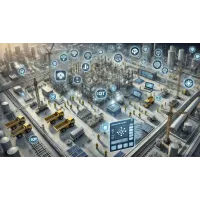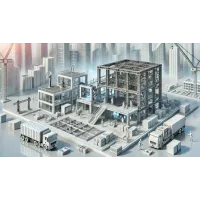Smart heating and cooling systems
In this article, we will explain how smart heating and cooling technologies are working, based on how technological components, energy savings, energy savings, real examples and future trends.
What are clever heating and cooling systems?
Smart heating and cooling systems are technologies that can adapt to the daily habits of the user, unlike traditional air conditioners and heating equipment, and remote-controllable technologies. These systems offer functional and effective heating management through artificial intelligence, sensor technologies and Internet connected devices (IOT). The main goal - to properly provide a maximum comfort with the correct temperature and minimal energy consumption.

Basic technologies and components
The main technological components that ensure effective operation of smart heating and cooling systems are:
1. Smart Thermostats
Smart thermostats like Nest, EcoBee, Tado automatically programs by following the user`s behavior. For example, when the user feels that it is not home, it turns off the system or saves.
2. Sensors
Temperature, humidity, movement and light sensors are watching the real state of space. Based on this information, the system is adjusted - for example, in the heated room with the sun`s ray is not provided in addition to additional heat.
3. Mobile apps and remote control
Users can control the system from anywhere. This allows you to monitor energy consumption and optimize daily mode while traveling.
4. Machine learning and artificial intelligence
Systems studying the user`s behavior begin to regulate "natural" after a certain time - that is, it can effectively work effectively without human intervention.

Energy savings and ecological effects
One of the greatest advantages of smart heating and cooling systems - energy savings. This savings benefit both the family budget and the environment. Several concrete facts:
- According to the US Department of Energy, smart thermostats provide an average of 10-12% heat and 15% cooling energy savings throughout the year.
- Nest users average Save $ 130-150 they do.
- Energy savings lead to a reduction in carbon emissions, which is an important step in the fight against climate change.
In addition, the timing of time in these systems and geographical accommodation functions prevent the system operation in the absence of no one at home. This minimizes the waste of energy.
Examples from real life
Smart heating and cooling systems are already applied in many countries and real results have been achieved:
In Germany, the government supports "smart home initiatives" and encourages the transition to these systems with subsidies.
In terms of energy efficiency in Scandinavian countries, these systems are already considered a standard.
- Platforms such as AirbnB give homeowners in additional advantages for venues equipped with intelligent systems.
Future Trends: Fully integrated intelligent home technology
Smart heating and cooling systems have already begun to combine with other intelligent home technologies. For example:
Optimization of energy source with solar panels
Sunlight management through clever windows and galors
Synchronous handling with lighting and security systems
Management with sound teams (Alexa, Google Assistant, Siri)
Thanks to this integration, the houses are already converted into a "smart living organ", not only a living space, but self-managing energy. Smart heating and cooling systems with the rapid development of technology have already become the future of today. These systems are not only to increase the comfort, but also an important tool for energy efficiency and environmental sustainability. If you want to reduce energy consumption, save costs, saving costs, saving costs in your home or in your workplace - it is time to switch to smart heating and cooling systems.


 Catalog
Catalog


